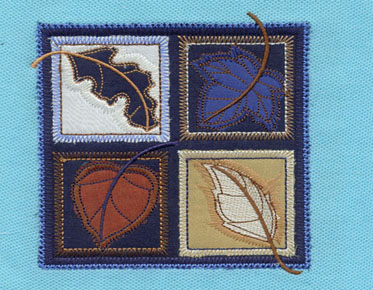Cause of Jumping Stitches on Digitizing Embroidery And How To Fix It
Jumping stitches, thread breakage and
other issues are common problems in digitizing embroidery. It is important to check whether your needle is dull or has
scratches or bends before having a go at fixing problems.
The embroidery machine can skip one or
more stitches when you do not care. This may be a common problem, but you
should not ignore it because it will weaken the integrity of the suture.
Therefore, I will introduce some reasons for stitching and what you can do to
repair them.
Why does the embroidery machine jumping
stitch
When the upper embroidery line
intersects the lower line axis, a stitch will be formed. When the upper and
lower threads cannot form a perfect connection, the stitch will not be formed.
A problem with the top or spool thread
may be the cause of this problem. Sometimes, the machine skips all stitches
because it does not pick up the line axis at the beginning of the design
sequence. This is sometimes referred to as false start. The five main reasons
for needle skipping are as follows:
1. Use a bad needle
As I mentioned, the most common reason
for dropped wires is the problem of machine needles. The following are some
examples of broken needles
Your machine needle may be slightly bent,
but you may notice bending.
The tip may darken due to repeated use.
Your needle may be chipped.
Please note that the needle is an
optional and inexpensive part of the embroidery machine. So it is best to
replace it after a period of time to avoid stitching. In addition, it is ideal
to use needles of the appropriate size and type for your work.
2. Use bad threads
The quality of the thread may also be
the reason why your embroidery machine falls. Note that high quality threads
have minimal discoloration or damage. Therefore, they are unlikely to be
damaged or cause problems when the equipment is working.
Experienced embroiderers usually
recommend re threading when there is evidence of missing stitches. However,
make sure you follow the instructions for the machine.
In addition, it is best to use the
right thread to match your needle and fabric for the best results. By doing so,
you can prevent further problems and your work from being destroyed.
3. Use the wrong needle
In addition to checking whether your
needle is damaged, it is also a good idea to check whether it is the right
size. Please note that choosing the right needle can decide to complete or skip
the suture.
Like thread, needles have different
sizes and fineness. Therefore, it is very important to know which embroidery
machine and fabric is most suitable for you to obtain good results. In
addition, it ensures the service life of the machine.
4. Dusty spool competition
Another common cause of thread falling
is dust or fluff in spool competitions. You can try cleaning it to see if your
machine will work better than before.
5. Incorrect machine tension
If you notice different stitching in
some areas, you may also need to check the tension on the machine. Adjust
according to the instructions of the machine or try to use the dial. However,
be sure to test with scrap first to ensure that it works well.
You can also try to loosen or slow
down the grip during sewing to see if it can solve the problem. If not, you can
also try to adjust the tension of the bobbin box.
How to solve stitch skipping of
embroidery machine
When my embroidery machine starts to
skip stitches, I will check this troubleshooting step lis
1. Check the upper thread
Clear the upper thread path and reset
the embroidery machine.
Make sure to thread with presser foot.
(Although you can lower the presser foot when using the needle threading
machine.
In addition, cleaning the upper
conductor and tension disc will help remove any unsightly thread fragments.
Clean the embroidery machine like a sewing machine
2. Inspection needle
For such a small thing, the needle may
bring big problems to the embroiderer. When I try to stitch, I always check my
stitches first. Damaged, bent or scratched needles will affect the interaction
between the lower thread and the upper thread. Even if your needle looks good,
please continue to replace it if it has been used.
However, before obtaining new needles,
make sure your fabric and thread have the correct needle type (ballpoint pen,
universal needle, sharp needle, etc.) and needle size. For example, if you use
wire, select an open seam or metal needle with large, long eyes. If you use
thick thread, please do not expect the big thread to fit comfortably into the
eyes of the small needle!
In addition, if you use a sewing
machine needle for embroidery, please try a specific embroidery needle. This is
best for most projects.
Finally, elastic woven fabrics may
benefit from bead embroidery needles, while thick and dense fabrics such as
vinyl may require larger, sharper needles.
For guidance on needle selection,
please see my article on selecting the best embroidery needle.
3. Check your supplies
Thread
Consider switching to a new brand or
type of thread, especially if this is the first time you are using a specific
thread spool on your computer. Poor or old thread is not suitable for
high-speed embroidery, and some types of thread (metal thread!) More patience
and troubleshooting are required. In addition, some machines only offer thread
brands.
There is a reason for this, but when I
use my machine to run long stitches on a very thin stabilizer, sometimes the
stitches will pass through the stabilizer, and it seems almost impossible to
make them. This is not a problem with my machine, but with my stabilizer.
Therefore, just check to make sure you
have the best stabilizer selection for your fabric and embroidery design
features.
4. Check spool and box
If you have never cleaned the
embroidery machine before, you will be surprised at the lint and fine thread
under the needle plate. Remove the needle plate, then the bobbin, and clean the
inside of the bobbin box. Then, remove the entire spool box and clean the
bottom basket.
Clean with a small brush and a
keyboard vacuum cleaner. When cleaning, check all parts of the machine for
small gaps. (The bobbin itself, needle board and bobbin box. If you see
something or want to completely eliminate the invisible problem, please
temporarily replace these parts with new ones.
5. Adjust the tension as a last resort
If you check the back of your
embroidery design and see that the thread at the top is not pulled to the back,
adjust the tension at the top. Try to reduce it and see if it has any effect.
If your upper thread is pulled too far toward the back of the fabric (you can hardly
see the thread axis), increase the tension on the top.
I hope these troubleshooting steps
about needle skipping of the embroidery machine can help you to restore your
machine to normal operation. Please share any other troubleshooting steps that
are effective for you in the comments to help other embroiderers!



